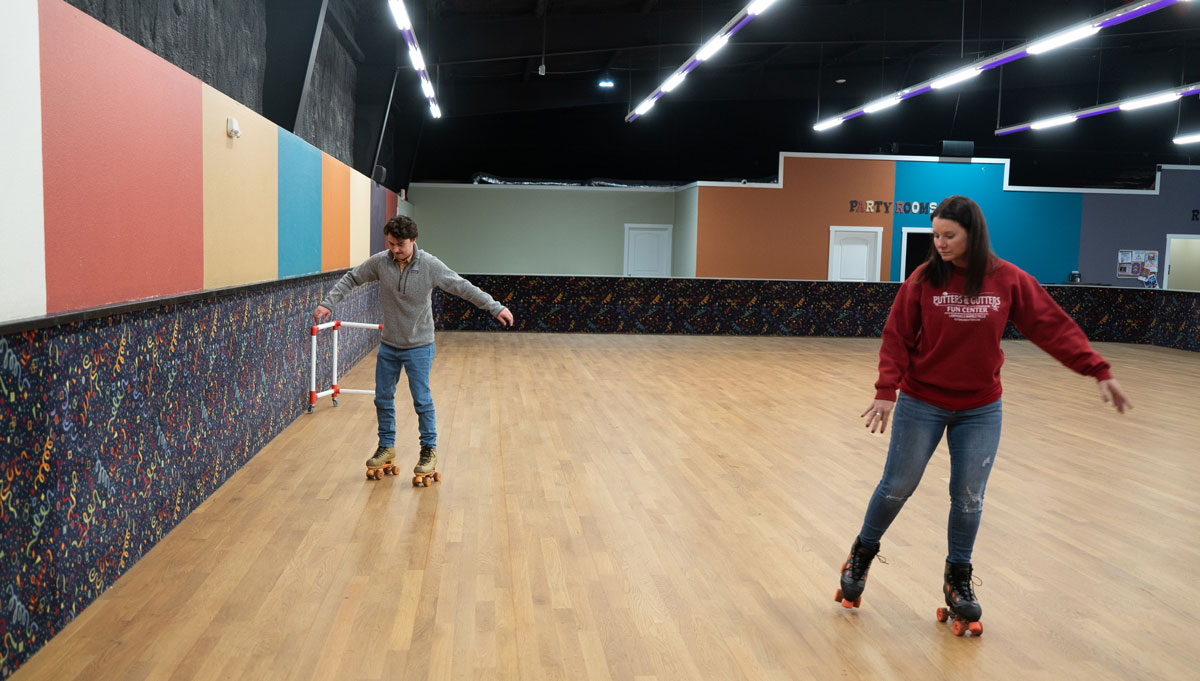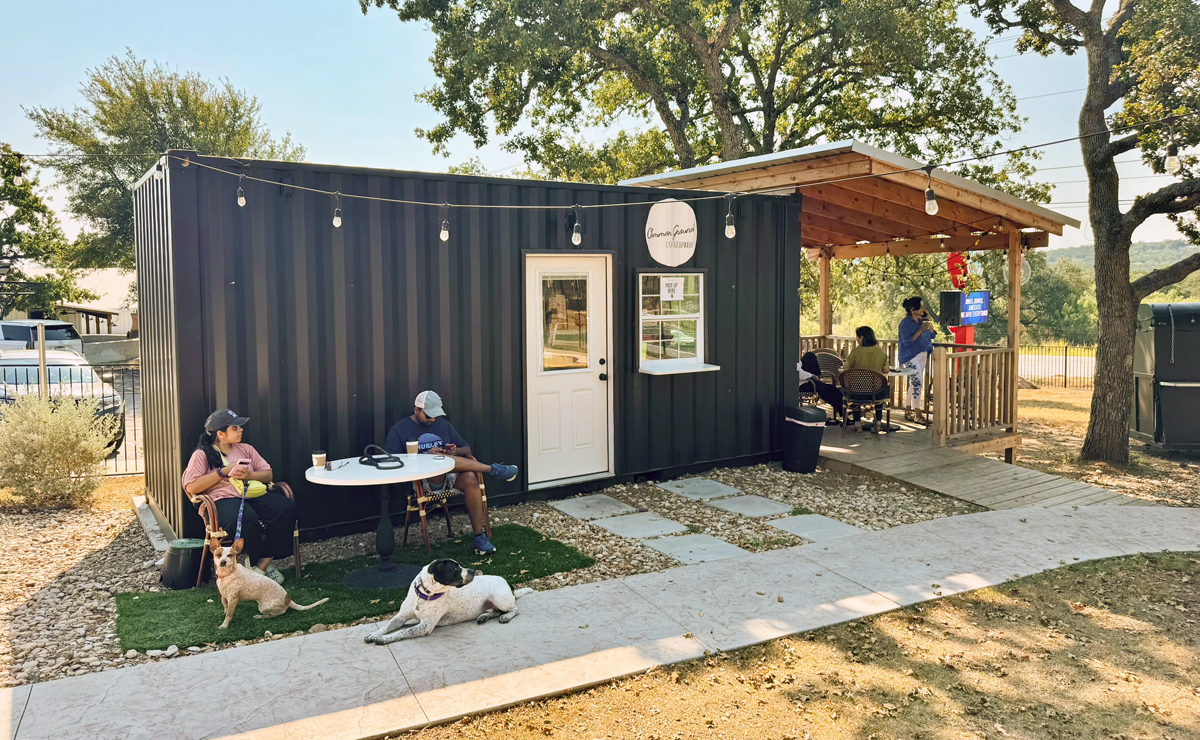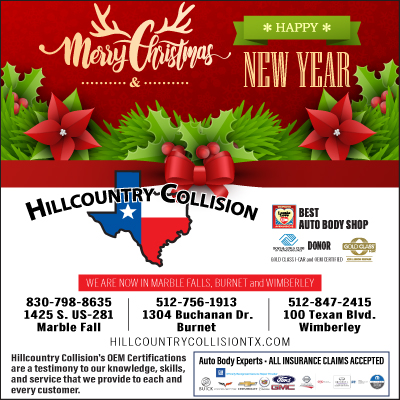
Kasey Faurie, the marketing coordinator at Putters and Gutters in Marble Falls, instructs 101HighlandLakes.com staff writer Nathan Bush on how to lace up his skates to help him maintain his balance and stability. Staff photo by Dakota Morrissiey
My first trip to a skating rink, which was when I was in high school, didn’t go so well. After returning home with an array of bruises, I swore to forgo skating forever.
Then, Putters & Gutters opened for business in Marble Falls with a variety of attractions, including miniature golf, bowling, a go-kart track, an arcade, and a skating rink. I decided to give roller skating another try, but this time with expert help.
I met with Putters & Gutters Marketing Coordinator Kasey Faurie, who taught skating as part of the physical education program at Liberty Hill Elementary School.
“I’ve been skating since I was little-bitty,” she said. “I’m from the country in West Texas, so there wasn’t a lot of concrete, but I’d skate on any I could find.”
The first step, she said, is to make sure the skates you choose fit you well. Unlike regular shoes, you want your skating kicks to fit as snugly as possible to decrease the amount of friction that causes blisters. That tight fit also increases control and maneuverability.
Another key pre-rink trick is to feed your shoelaces through each eyelet, all the way to the last two at the top of the skate. A tugged-tight tie at the top ensures amble ankle support, which increases your ability to balance.
“The most important thing is the tongue of the skate because it keeps your ankle secure,” Faurie said. “If your ankle isn’t secure, you’re not going to be a successful skater.”

Once properly laced up, I was ready to roll. Faurie brought out a walker-like skate trainer used mostly for kids. Skate trainers are made out of PCV pipe and give novices like me something to hang on to as we learn to find our balance.
Balance, I learned, is centered in your belly button.
“When you think about your belly button, it brings balance to your body,” Faurie said. “When you feel wobbly, think about your belly button.”
Adults should lean forward while skating to avoid falling on their tailbones, she continued. “As an adult, you always want to put your weight a little bit more forward than back,” Faurie said. “When you put your weight back, you risk falling backwards.”
As I started to gain confidence, I ditched the trainer and tested my mettle with the new tricks I had learned. Faurie immediately noticed a flaw in my technique.

“Rhythm in skating is a huge deal,” she said. “You want to go between each foot and think one-Mississippi, two-Mississippi.”
While I heeded Faurie’s directions, I struggled to gain speed.
“You don’t need to walk with your skates,” she told me. “Your motion (with your feet) is supposed to go outside. When you push out, you need to glide with the forward momentum.”
After a few turns around the rink at a novice pace, Faurie dared me to push my boundaries, speed up, and put on the brakes with my skates.
“To stop, you can either drag your toe or you can do it my favorite way,” she said. “You extend one foot out and bring your heels together. You’ll do a 180 (degree turn).”
She also taught me how to skate in reverse.
“To go backwards, you make an hourglass with your feet,” she said. “It’s all about how you apply pressure to the wheels of the skates.”
After a little more than an hour of skating, I realized I was hooked on a new sport. While I worried aloud that I might not remember how to do everything the next time I strapped wheels to my feet, Faurie assured me the basics will stick with me forever.
“It really is just like riding a bike,” she said. “Once you learn, you’ll never forget.”
Skating through history
- Roller skating tracks its history to Holland in the early 1700s, when an unknown Dutch ice skater designed a pair of wooden skates for year-round use.
- Skates were used in theatrical performances in London and Paris as far back as the early 1800s.
- In 1863, James Leonard Plimpton, a furniture dealer in New York City, patented the modern four-wheeled roller skate. The invention gave skating enthusiasts more maneuverability and the ability to skate backward.
- As roller skating fell out of popular culture, drive-in restaurant workers in the mid-1900s helped bring skates back into style as they glided on wheels to deliver meals to customers.
- Skating reached peak popularity during the Roller Disco era in the 1970s and ’80s. The activity’s popularity led to the creation of National Roller Skating Month by former President Ronald Reagan in 1983.












